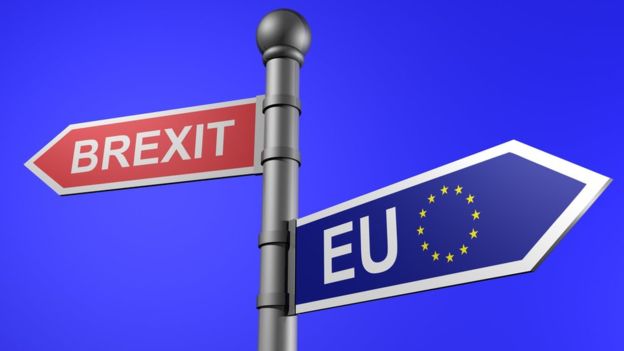Ανακοίνωση ΤΜΗΜΑ ΟΔΙΚΩΝ ΜΕΤΑΦΟΡΩΝ
19/01/2021
Σε σχέση με το πιο πάνω θέμα, το Τμήμα Οδικών Μεταφορών του Υπουργείου Μεταφορών, Επικοινωνιών και Έργων, ανακοινώνει ότι, λόγω της αποχώρησης του Ηνωμένου Βασιλείου (Η.Β.) από την Ευρωπαϊκή Ένωση, για τα οχήματα που προέρχονται από αυτό, εφαρμόζονται οι πρόνοιες των Κανονισμών που αφορούν οχήματα που προέρχονται από τρίτες χώρες (μη μέλη της Ε.Ε.).
Συγκεκριμένα, εφαρμόζονται τα ακόλουθα:
A. Όχημα κατηγορίας Μ1 (σαλούν – μέχρι 8 θέσεων επιβατών μη περιλαμβανομένου του
οδηγού)
Μπορεί να εγγραφεί, νοουμένου ότι κατά την ημερομηνία άφιξης του σε νόμιμο λιμάνι της Δημοκρατίας είναι ηλικίας μέχρι πέντε χρόνων, αυτών υπολογιζομένων από την ημερομηνία κατά την οποία το όχημα έχει εγγραφεί σε οποιαδήποτε χώρα ως καινούργιο.
Διευκρινίζεται ότι, το πιο πάνω δεν ισχύει για όχημα κατηγορίας Μ1 που έχει ήδη μεταφερθεί ή εισαχθεί στη Δημοκρατία από το Ηνωμένο Βασίλειο και δεν έχει ακόμη εγγραφεί ή θα έχει φορτωθεί με προορισμό νόμιμο λιμάνι της Κυπριακής Δημοκρατίας μέχρι την Δευτέρα 15/2/2021. Τα οχήματα αυτά θα μπορούν να εγγραφούν, οποτεδήποτε, ανεξάρτητα αν η ηλικία τους υπερβαίνει τα πέντε χρόνια.
Για να εγγραφεί ένα όχημα κατηγορίας Μ1, πρέπει να συνοδεύεται με το αυθεντικό πιστοποιητικό εγγραφής του από το Η.Β. («Registration Certificate – V5c»), να έχει εκδοθεί για αυτό πιστοποιητικό καταλληλότητας (ΜΟΤ) στην Κύπρο και να έχει εκδοθεί για αυτό ευρωπαϊκή έγκριση τύπου ολοκληρωμένου οχήματος (WVTA) ή Έγκριση Τύπου Μεμονωμένου Οχήματος (SVA) στην Κύπρο.
Το πιστοποιητικό εγγραφής του Η.Β. (που εκδόθηκε μέχρι 31/12/2020), αποτελεί επαρκές αποδεικτικό έγγραφο ότι, για το όχημα υπάρχει WVTA, νοουμένου ότι φέρει ένδειξη της έγκρισης τύπου του οχήματος (WVTA). Η ένδειξη που πρέπει να αναζητείται στο V5c βρίσκεται στο σημείο «Κ» («Type Approval Number») και είναι της μορφής π.χ.
«e4*2007/46*0186*11». Σε περίπτωση που δεν υπάρχει η ένδειξη αυτή, το όχημα για να εγγραφεί, πρέπει να λάβει Έγκριση Τύπου Μεμονωμένου Οχήματος (SVA) στην Κύπρο.
Β. Οχήματα κατηγορίας Μ2 και Μ3 (Λεωφορεία) και κατηγορίας Ν1, Ν2 και Ν3 (μεταφοράς
εμπορευμάτων – π.χ. διπλοκάμπινα, «pick – up», φορτηγά) Εγγράφονται ανεξάρτητα από την ηλικία τους νοουμένου ότι –
(ι) προσκομίζονται ή υπάρχουν στοιχεία που αποδεικνύουν ότι οι εκπομπές αερίων και σωματιδιακών ρύπων του οχήματος (της μηχανής) συνάδουν με τις απαιτήσεις που ίσχυαν στο Ευρωπαϊκό Δίκαιο κατά την ημερομηνία που το όχημα ενεγράφη σε οποιαδήποτε χώρα για πρώτη φορά και
(ιι) είναι εφοδιασμένα με Σύστημα Αντιπλοκαρίσματος Φρένων (A.B.S.).
Το πιστοποιητικό εγγραφής του Η.Β. (V5c – που εκδόθηκε μέχρι 31/12/2020) αποτελεί και πάλι επαρκές αποδεικτικό έγγραφο ότι τηρείται η απαίτηση της παραγράφου Β(ι) πιο πάνω, νοουμένου ότι η μηχανή που φέρει το όχημα κατά την επιθεώρηση του είναι η ίδια με αυτή που αναφέρεται στο εν λόγω πιστοποιητικό εγγραφής. Στην περίπτωση που η μηχανή είναι διαφορετική, απαιτείται σχετική τεκμηρίωση ότι η νέα μηχανή συνάδει με το αντίστοιχο
«EURO» (π.χ. βεβαίωση κατασκευαστή ή του αντιπροσώπου του ή/και επαρκής πληροφόρηση από τεχνικά εγχειρίδια της μηχανής κλπ).
Γ. Οχήματα κατηγορίας L (μοτοποδήλατα, μοτοσυκλέτες, τρίκυκλα και τετράκυκλα)
Όχημα της κατηγορίας L εγγράφεται ανεξάρτητα από την ηλικία του, νοουμένου ότι συνοδεύεται με το Ευρωπαϊκό Πιστοποιητικό Συμμόρφωσης (Certificate of Conformity – CoC) – (ΠΣ) του οχήματος που ίσχυε κατά την ημερομηνία πρώτης εγγραφής του. Γίνεται επίσης αποδεκτό αντίγραφο του ΠΣ που εκδίδεται από τον ίδιο τον κατασκευαστή ή τον αντιπρόσωπο του.
Επίσης, γίνεται αποδεκτό και το πιστοποιητικό εγγραφής του Η.Β. (που εκδόθηκε μέχρι 31/12/2020), το οποίο αποτελεί επαρκές αποδεικτικό έγγραφο ότι, για το όχημα υπάρχει WVTA και άρα έχει εκδοθεί ΠΣ, νοουμένου ότι το πιστοποιητικό εγγραφής του Η.Β φέρει την ένδειξη της έγκρισης τύπου του οχήματος (WVTA).
Πηγή: TOM


